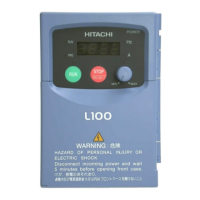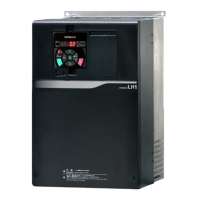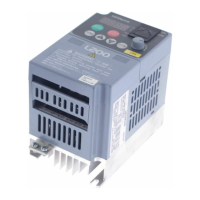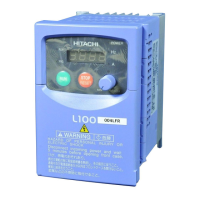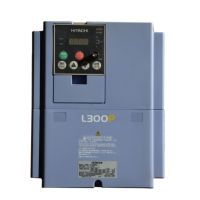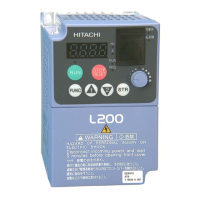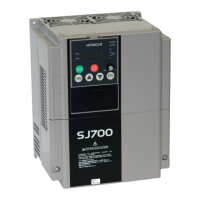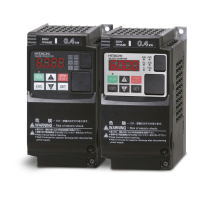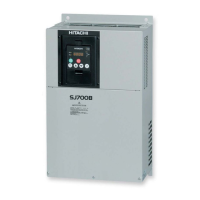
Do you have a question about the Hitachi L700 Series and is the answer not in the manual?
Procedures for inspecting the inverter after unpacking to check for damage or correct product.
How to inquire about product issues and details of the product warranty.
Identifies external components and views of the inverter.
Detailed instructions and precautions for installing the inverter, covering location, environment, and mounting.
Comprehensive guidance on wiring, including main circuit, control circuit, digital operator, and terminal explanations.
Guidance on selecting and wiring regenerative braking resistors for specific inverter models.
Details various methods for operating the inverter, including digital operator, control terminals, and test runs.
Explains the names, functions, and operation of the digital operator components and modes.
Provides a step-by-step guide for performing a test run of the inverter and connected system.
Describes various monitoring modes for output frequency, current, rotation direction, and other parameters.
Explains various function modes, including output frequency setting, run key routing, and rotational direction restriction.
Explains settings for acceleration and deceleration times and their impact on motor performance.
Allows selection of V/f characteristic curves for motor control, including Constant Torque and Reduced Torque.
Compensates for voltage drops to improve motor torque at low speeds, with manual and automatic options.
Configures DC braking for motor control, including enabling, frequency, force, and time settings.
Enables process control based on PID loops for fluid flow, airflow, and pressure.
Configures inverter behavior (retry or trip) after instantaneous power failures or undervoltages.
Protects the motor from overheating by monitoring current and thermal characteristics.
Monitors motor current during operation and automatically reduces output frequency or provides overload notices.
Prevents inverter tripping due to overvoltage caused by motor regeneration during deceleration.
Assigns various functions to intelligent input terminals [1] to [8] for flexible control.
Explains the emergency stop function, its activation via slide switch SW1, and related terminal assignments.
Details inverter error codes, their display, and corresponding troubleshooting steps.
Lists error indications from protective functions when SJ-DG or SJ-DN option boards are mounted.
Explains how to interpret trip factor codes and monitor related conditions like output frequency and voltage.
Lists warning codes and their associated parameter readjustments, indicating potential issues.
Crucial safety precautions to follow before performing any maintenance, inspection, or part replacement.
Outlines daily checks and periodic inspections for ensuring proper inverter function and longevity.
Provides a method for checking the quality of inverter and converter circuits using a tester.
Describes methods and instruments for measuring inverter input/output voltages, current, and power.
Lists detailed specifications for 200 V and 400 V class models, including capacity, voltage, current, and braking systems.
Provides dimensional drawings and measurements for various inverter models.
General precautions and guidelines for setting inverter data parameters.
Details the default monitoring display and how to change it using initial-screen selection.
Lists function codes, their monitored data or settings, and default values.
Lists parameters available in extended function mode, including those for analog input and multispeed settings.
